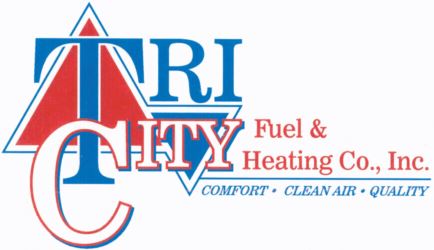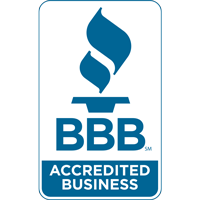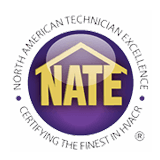
Ceiling fans are one of the most underappreciated ways to enhance comfort and reduce energy costs. By enhancing air circulation and assisting your HVAC system, ceiling fans and energy efficiency are truly a perfect combination. They offer a smart, energy-efficient way to keep cool while lessening strain on your AC—helping you avoid unnecessary air conditioning repair.
In this blog, the experts at Tri City Fuel & Heating break down how ceiling fans can make your home feel more comfortable while lowering your energy use with higher HVAC efficiency. We'll also provide some HVAC efficiency tips that put to good use ceiling fans.
Comfort vs. Temperature: Staying Cool Using the Wind-Chill Effect Indoors
Ceiling fans don’t actually lower the room temperature—they make your home more comfortable by moving air over your skin. This is called the wind-chill effect, and it can make a room feel up to 4 degrees cooler without adjusting the thermostat. That means you stay comfortable and enjoy the benefits of indoor air circulation from your ceiling fan while relying less on your air conditioner—helping reduce your electric bill in summer.
The Best of Both: Advantages of Pairing Fans and Air Conditioning Together
There are several benefits to using ceiling fans and air conditioning in tandem, especially during the warmer months. By using both, you boost HVAC efficiency and enjoy a cooler living space with less work from your cooling system.
Benefits of using ceiling fans and AC together:
- Ceiling fans help lower HVAC load by circulating cool air more evenly throughout a room. Decreasing HVAC stress is important, because it can prevent a breakdown that could lead to premature AC or furnace installation.
- Using overhead fans improves your indoor comfort by getting rid of warm pockets and improving air movement.
- Combining ceiling fans and AC can lower your utility usage. If you have a home automation system, you can even fine-tune your smart thermostat settings to increase the temperature slightly while your ceiling fan is running.
Clockwise vs. Counterclockwise Ceiling Fan Rotation: What Direction to Spin in Summer and Winter?
To make full use of your ceiling fans year-round, it’s important to make sure the blades rotate in the proper direction for the season. The direction impacts how air moves, which can either make you feel cooler or redistribute heat so you feel warmer.
When it's best to spin ceiling fans counterclockwise
On hot days, ceiling fans should spin counterclockwise at a faster setting. This creates a breeze that forces cool air down, amplifying the wind-chill effect and causing you to feel cooler.
When it's best to spin ceiling fans clockwise
When it's cold out, set your fan to rotate clockwise on a gentle setting. This softly moves cold air up and draws warm air downward from the ceiling, making the space feel cozier without adjusting your thermostat.
How to Pick Out the Best Ceiling Fan for My Home
Selecting the right ceiling fan depends on a few key factors, including blade design, airflow rating and room dimensions. First, look for fans with a good balance of ECFM airflow and blade pitch to deliver efficient air movement in your home:
- ECFM refers to the amount of air a fan circulates—the cubic feet per minute, or CFM—per watt of electricity consumed. Fans with greater ECFM are more energy efficient.
- Blade pitch refers to the incline of the blades. A sharper blade pitch increases airflow but can also put extra load on the motor.
Also, consider room size when sizing a ceiling fan—a fan that’s too small won’t move enough air, while one that’s too big may be disruptive in a smaller room.
Boost Your HVAC Efficiency With Help from Tri City Fuel & Heating
At Tri City Fuel & Heating, our HVAC technicians can help you stay comfortable while easing the burden on your heating and cooling systems. From efficient ceiling fan strategies and air conditioning installation to smart thermostats and furnace repair, we offer comprehensive solutions that work with your budget. Schedule your appointment by calling 803-592-9776 today.


